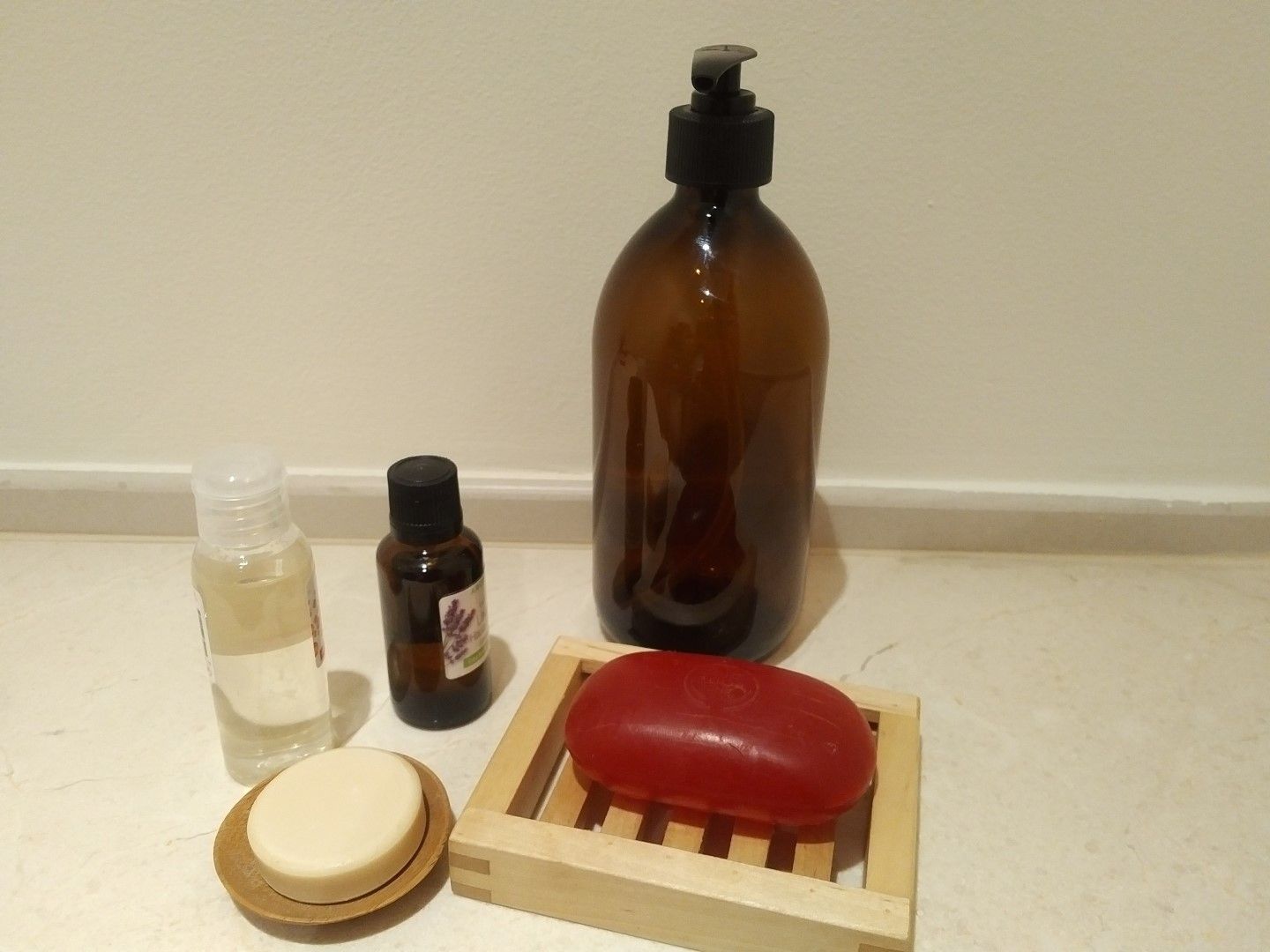Growing up we only ever used bars of soap to wash our hands. My grandparents also tended to use bars of soap for washing clothes as well as most personal hygiene. Liquid soap is a relatively new trend. The argument for it is that it is more hygienic than using a bar of soap. However, there is a large price difference. Not only that, if you take the time to read the labels they are never ending and full of unpronounceable ingredients. I have already talked about how important it is to look after your skin and how many of the chemicals used in cosmetics are harmful (see previous blog posts). So what’s the solution? It’s actually much simpler than you think, and it will also save you a fair amount of money.
I’ll be honest, what first pushed me to start experimenting on making my own soap was the fact that we had been given a high quality bar of pure Marseilles soap as a present. However, once it started to dry up it lay discarded for a long time, and was replaced once again by shop bought liquid soap. I didn’t want to throw it away. In fact, I have accumulated quite a collection of very good quality pure soaps from both Marseilles and Aleppo over the years, but they have been lying neglected at the back of the cupboard, unused. The only bar of soap I tend use is for handwashing very soiled kitchen cloths and rags.
In a moment of inspiration I realised that maybe there was a way of turning these bars into useful liquid soap. I was surprised to find out that in just 3 simple steps you can easily turn any bar of soap at home into the liquid kind. Either for your hands, as a shower gel or even for clothes and cleaning. Want to know how? Read on!
What kind of soap to use
If you are trying this to keep your cleaning routine as healthy and chemical free as possible, then you’ll probably want to use pure bars of either Marseilles or Aleppo soap. The real stuff has traditionally been made for centuries with natural ingredients such as water and olive oil and no additives. They were and should be inexpensive (much like soap bars in general).
However, you could also use glycerine soap bars, discarded scraps of old soap or even new soap bars (scented or unscented). It all depends on you and whether your health concerns are more focused on your personal health or that of the planet, or both! Obviously if your bar of soap already contains olive oil or glycerine you will not need to add any. The same goes for scented soaps where you will not need essential oil.
My recipe below is based on pure unscented olive oil based Marseilles soap, as my intention is mainly to keep my life as chemical free as possible.
What you will need
1 bar of pure (Marseilles) soap
Distilled water (see more of this below)
15-20 drops of pure lavender essential oil or other oil of your choice (optional)
1 tsp of liquid vegetable glycerine or olive oil (optional)
Equipment needed
1 deep pan
a metal grater
a funnel
a whisk
a glass liquid soap dispenser
How to proceed
1. To make the distilled water I take tap water, filter it in the appropriate jug, pour it into the kettle and bring to the boil. Then allow it to cool down to room temperature before use.
2. If using scraps of old soap, weigh these first. Grate the soap or break it up into small pieces directly into the pan you will use.
3. Add the distilled water and mix well with the whisk. You will need 1 part of soap to 3 parts of water approximately, depending on how thick or liquid you want your soap to be, and the use you want to make of it. Shower gels generally contain less water than hand soaps. Start with 2 to 3 parts and add more water accordingly, bearing in mind it will thicken when it cools down.
4. Heat up the mixture on a low heat until the soap has completely melted. Whisk so that it is evenly mixed.
5. Remove from the heat and then add the glycerine and/or the essential oil (the latter is best added when the soap has cooled down). Give it another whisk.
6. Use the funnel to pour into your soap dispenser.
The first time I tried I didn’t use enough water and it came out too thick to use as hand soap. However, I then went back to step 3, added more water and achieved the consistency I wanted. You might need to go slowly at first as not all soaps will react the same way.
The advantage of making your own is not only that you can personalise it, but that if you make too much you can always turn this into gifts for family and friends.
There you have it, the simple and cheap way to make your own liquid soaps and gels at home. Happy soap making!


